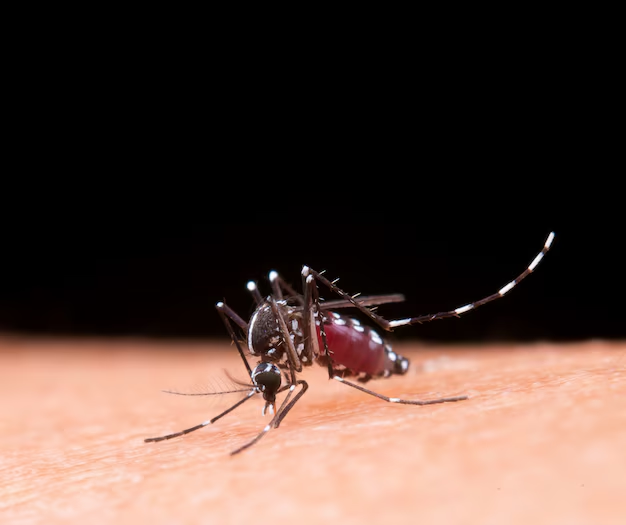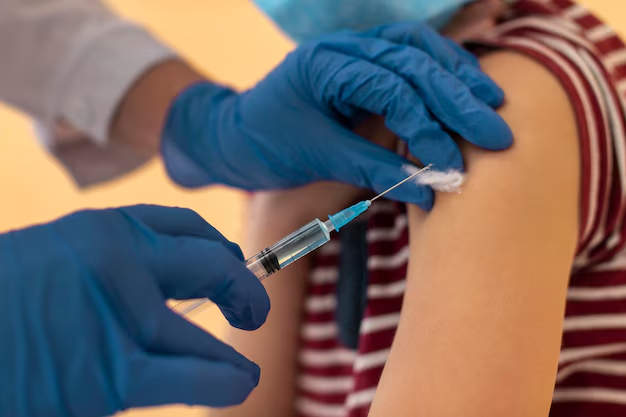Dengue Fever: Causes, Symptoms, Prevention, and Treatment

Dengue Fever: Causes, Symptoms, Prevention, and Treatment
Dengue fever is a mosquito-borne viral infection that has become a significant public health concern in many tropical and subtropical regions around the world. The disease is caused by the dengue virus, which is transmitted to humans through the bite of infected Aedes mosquitoes, primarily Aedes aegypti. Dengue fever can range from a mild illness to a severe, potentially fatal condition. In this article, we will explore the causes, symptoms, prevention, and treatment of dengue fever in detail.
1. Understanding Dengue Fever
1.1 What is Dengue Fever?
Dengue fever is an acute viral infection caused by the dengue virus, which belongs to the Flaviviridae family. The virus exists in four distinct serotypes: DEN-1, DEN-2, DEN-3, and DEN-4. Infection with one serotype provides lifelong immunity to that specific serotype, but not to the others. Subsequent infections with different serotypes increase the risk of severe dengue, also known as dengue hemorrhagic fever (DHF) or dengue shock syndrome (DSS).
1.2 Global Impact of Dengue
Dengue fever is endemic in over 100 countries, particularly in Southeast Asia, the Pacific islands, the Caribbean, Latin America, and Africa. According to the World Health Organization (WHO), an estimated 390 million dengue infections occur each year, with approximately 96 million manifesting clinically. The disease imposes a significant burden on healthcare systems and affects millions of people, particularly in densely populated urban areas where mosquito breeding is prevalent.
2. Causes of Dengue Fever
2.1 The Dengue Virus
Dengue fever is caused by the dengue virus, which is transmitted to humans through the bite of an infected female Aedes mosquito. The two primary species responsible for transmission are Aedes aegypti and Aedes albopictus. These mosquitoes are typically found in tropical and subtropical regions and are known for their distinctive black-and-white striped legs.
2.2 Transmission Cycle
- The transmission of the dengue virus involves a complex cycle:……….

- Mosquito-Human Transmission: The cycle begins when a female Aedes mosquito bites a person who is already infected with the dengue virus. The mosquito becomes infected as it ingests the virus along with the person’s blood.
- Incubation Period in Mosquito: The virus undergoes an incubation period within the mosquito, which lasts about 8-12 days. During this time, the virus replicates within the mosquito’s salivary glands.
- Infection of Humans: Once the incubation period is complete, the infected mosquito can transmit the virus to another person through its bite. The virus is introduced into the person’s bloodstream, leading to infection.
- Human-Mosquito Transmission: The cycle can continue as newly infected individuals are bitten by other mosquitoes, perpetuating the spread of the virus.
2.3 Risk Factors
Several factors increase the risk of contracting dengue fever:
- Living in or Traveling to Endemic Areas: People residing in or visiting tropical and subtropical regions where dengue is common are at a higher risk.
- Lack of Mosquito Control: Areas with inadequate mosquito control measures, such as poor waste management and stagnant water, provide breeding grounds for Aedes mosquitoes.
- Seasonal Variation: Dengue outbreaks are often associated with the rainy season, when mosquito populations increase due to the availability of water for breeding.
- Repeated Infections: Individuals who have previously been infected with one serotype of the dengue virus are at higher risk of developing severe dengue if they are infected with a different serotype.
3. Symptoms of Dengue Fever
3.1 Incubation Period
The incubation period for dengue fever is typically 4-10 days after the bite of an infected mosquito. During this period, the virus multiplies within the body, but symptoms have not yet appeared.
3.2 Mild Dengue Fever
Mild dengue fever, also known as “classic dengue,” is characterized by the following symptoms:
- Sudden High Fever: A rapid onset of high fever, often reaching 104°F (40°C), is one of the hallmark symptoms of dengue.
- Severe Headache: Patients often experience intense headaches, particularly in the forehead region.
- Retro-orbital Pain: Pain behind the eyes is a common symptom, which can be aggravated by eye movement.
- Joint and Muscle Pain: Dengue is sometimes referred to as “breakbone fever” due to the severe muscle and joint pain it causes.
- Nausea and Vomiting: Gastrointestinal symptoms, including nausea and vomiting, are frequently reported.
- Skin Rash: A rash may appear on the face, chest, and limbs. It usually develops 2-5 days after the fever starts and may resemble measles.
- Fatigue and Weakness: Patients often feel extremely tired and weak, even after the fever subsides.
3.3 Severe Dengue
Severe dengue, also known as dengue hemorrhagic fever (DHF) or dengue shock syndrome (DSS), is a life-threatening condition that requires immediate medical attention. It is characterized by the following symptoms:
- Severe Abdominal Pain: Intense pain in the abdomen is a key symptom of severe dengue.
- Persistent Vomiting: Continuous vomiting, often accompanied by blood, is a serious symptom.
- Bleeding: Patients may experience bleeding from the nose, gums, or under the skin, leading to easy bruising. Internal bleeding may also occur, causing blood in the stool or vomit.
- Rapid Drop in Platelet Count: Severe dengue leads to a significant decrease in the number of platelets (thrombocytopenia), which are essential for blood clotting.
- Plasma Leakage: The walls of blood vessels become permeable, leading to leakage of plasma into surrounding tissues. This can result in fluid accumulation in the chest and abdomen.
- Shock: In severe cases, the patient may go into shock, characterized by a sudden drop in blood pressure, rapid pulse, cold and clammy skin, and reduced urine output. Dengue shock syndrome can be fatal if not treated promptly.
4. Prevention of Dengue Fever
4.1 Mosquito Control Measures
The most effective way to prevent dengue fever is to control the mosquito population and reduce the risk of mosquito bites. Key measures include:
- Elimination of Breeding Sites: Aedes mosquitoes breed in stagnant water. Eliminating standing water in and around homes, such as in flower pots, buckets, and discarded tires, can significantly reduce mosquito populations.
- Use of Insect Repellents: Applying insect repellents containing DEET, picaridin, or oil of lemon eucalyptus to exposed skin can help prevent mosquito bites.
- Mosquito Nets and Screens: Using mosquito nets over beds, especially in areas where air conditioning is not available, can protect against mosquito bites during sleep. Installing screens on windows and doors also helps keep mosquitoes out.
- Wear Protective Clothing: Wearing long-sleeved shirts, long pants, socks, and shoes when outdoors can reduce skin exposure to mosquito bites.
- Use of Insecticides: Spraying insecticides in areas where mosquitoes are prevalent, particularly during outbreaks, can help reduce mosquito populations.
4.2 Community-Based Initiatives
Community involvement is crucial in the fight against dengue. Public health campaigns aimed at educating communities about the importance of mosquito control, proper waste disposal, and the elimination of breeding sites can have a significant impact on reducing the incidence of dengue
4.3 Vaccination
A dengue vaccine, known as Dengvaxia (CYD-TDV), has been developed and is approved for use in certain countries. However, it is currently recommended only for individuals who have had a previous dengue infection, as it may increase the risk of severe dengue in those who have not been previously infected. Research is ongoing to develop more effective and widely applicable vaccines.
5. Treatment of Dengue Fever
5.1 Management of Mild Dengue Fever
There is no specific antiviral treatment for dengue fever. Management of mild dengue focuses on relieving symptoms and providing supportive care:
- Hydration: Staying well-hydrated is crucial, as fever and vomiting can lead to dehydration. Patients should drink plenty of fluids, such as water, oral rehydration solutions, and clear broths.
- Pain Relief: Paracetamol (acetaminophen) is recommended for relieving pain and reducing fever. Non-steroidal anti-inflammatory drugs (NSAIDs), such as aspirin and ibuprofen, should be avoided, as they can increase the risk of bleeding.
- Rest: Patients should get plenty of rest to help their body recover from the infection.
5.2 Treatment of Severe Dengue
Severe dengue is a medical emergency that requires hospitalization. Treatment focuses on managing symptoms, preventing complications, and providing supportive care:
- Intravenous (IV) Fluids: IV fluids are administered to maintain blood pressure and prevent shock caused by plasma leakage. Careful monitoring of fluid balance is essential.
- Blood Transfusions: In cases of severe bleeding or very low platelet counts, blood transfusions may be necessary to stabilize the patient.
- Oxygen Therapy: Oxygen may be provided to patients who are experiencing difficulty breathing or who have low blood oxygen levels.
- Monitoring and Supportive Care: Patients with severe dengue require close monitoring of vital signs, blood pressure, and fluid status. In some cases, intensive care may be needed.
5.3 Recovery and Long-Term Outlook
Most patients with dengue fever recover within one to two weeks. However, recovery from severe dengue may take longer, and some patients may experience prolonged fatigue and weakness. It is important for patients to follow their healthcare provider’s instructions and attend follow-up appointments to ensure





